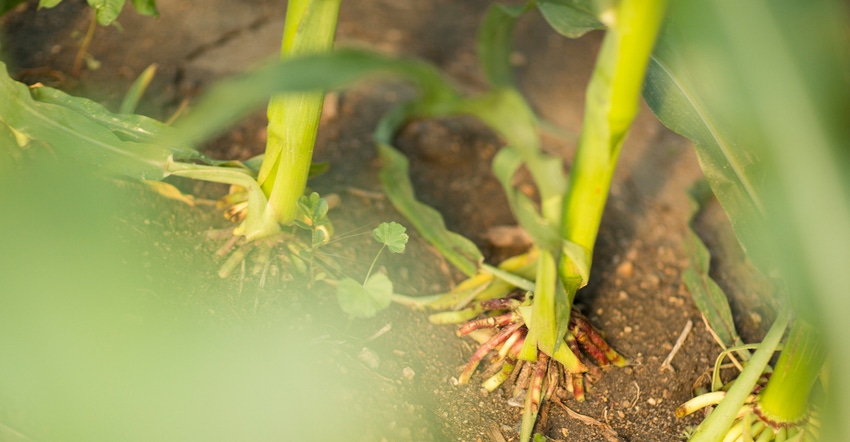September 26, 2019

By Jon Zuk
Tissue sampling data from 2019 can be a valuable component of your 2020 farm plan.
For the past nine years, WinField United has taken tissue samples from our test plot program to monitor nutrient trends in Minnesota. This year, samples came from both our test plot program and from individual farms.
Here’s a preview of the nutrient deficiencies we saw in fields this year and how these trends could impact next season’s decisions.
Trends in corn and soybeans
Due to the moisture we had in 2019, nitrogen and boron deficiencies surfaced strongly and early in corn. We’ve seen early-season nitrogen deficiencies before, but boron deficiencies this year were greater than what is typically considered normal. However, once corn moved into its grand growth stage, nitrogen and boron levels evened out and zinc became the most deficient nutrient.
Between R1 and R4, nearly 82% of tissue samples showed a manganese deficiency, which indicated that plants were trying hard to photosynthesize. This synced up with the weather we’d been having — a lot of sunlight but not much heat — and also coupled with a late-season sulfur deficiency that led into grain fill.
In soybeans, from late vegetative stages to R1, manganese was the most deficient nutrient in Minnesota. Typically, manganese is the nutrient that tends to be most deficient in soybeans, and this year’s tissue samples reflected that. As soybeans moved into later stages of maturity, manganese was still deficient, as was potassium and some other macronutrients.
As you review your own tissue samples from 2019, look at your macronutrient deficiencies. Have a strategy to correct the nutrient deficiencies that are most apparent in your fields, perhaps by making a fall application of fertilizer to your soybeans.
The story for 2020
I believe these nutrient trends will affect the 2020 season in three ways:
1. Change the way we manage our crop. We were able to put our tissue samples into a crop model, which allowed us to make 2019 management decisions and see our potential going forward. Talk with your agronomist this winter about entering your 2019 tissue sample data into a crop model to see what you can capitalize on for 2020 just by managing nutrients differently.
2. Take more strategic tissue samples. This season’s uncommon conditions forced farmers in the Midwest to ask, “When is the weather going to affect my tissue sampling response the most?” Rather than take a bunch of samples, focus on the two most important ones you take during the season and when you take them. This will help you make more consistent and concise nutrient applications in 2020. Use in-season imagery to help guide which spot in the field you look to for good representation.
3. Query the data. Over the winter, review local tissue sampling data with your agronomist and run a few “If I would have done this, then maybe this would have happened” scenarios. Bring these learnings into your 2020 planning efforts.
What to do this fall
If you don’t have a plan for fall soil sampling, look at your tissue samples from this year, determine which fields were deficient, compare that to your yield and put your money where you need it most in the field. Remember to compare your field data to other trends seen in the area where you farm and work with your agronomist to get an idea of what some of the “normals” were in that area. Don’t forget about macronutrients such as phosphorus and potassium, or a micronutrient such as zinc, which are all typically applied in the fall.
Shoring up nutrient gaps now can get you steps ahead for 2020.
Zuk is a regional agronomist with WinField United in southern Minnesota. Contact him at [email protected].
You May Also Like




